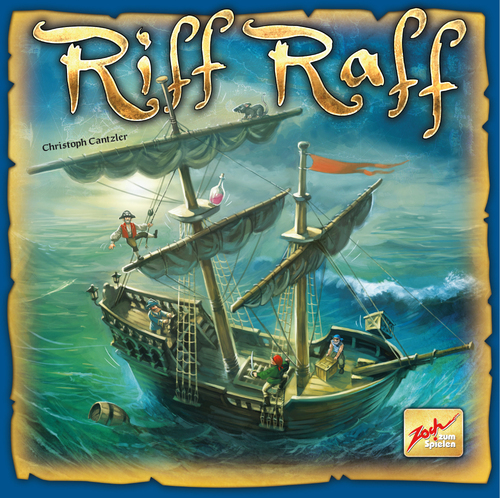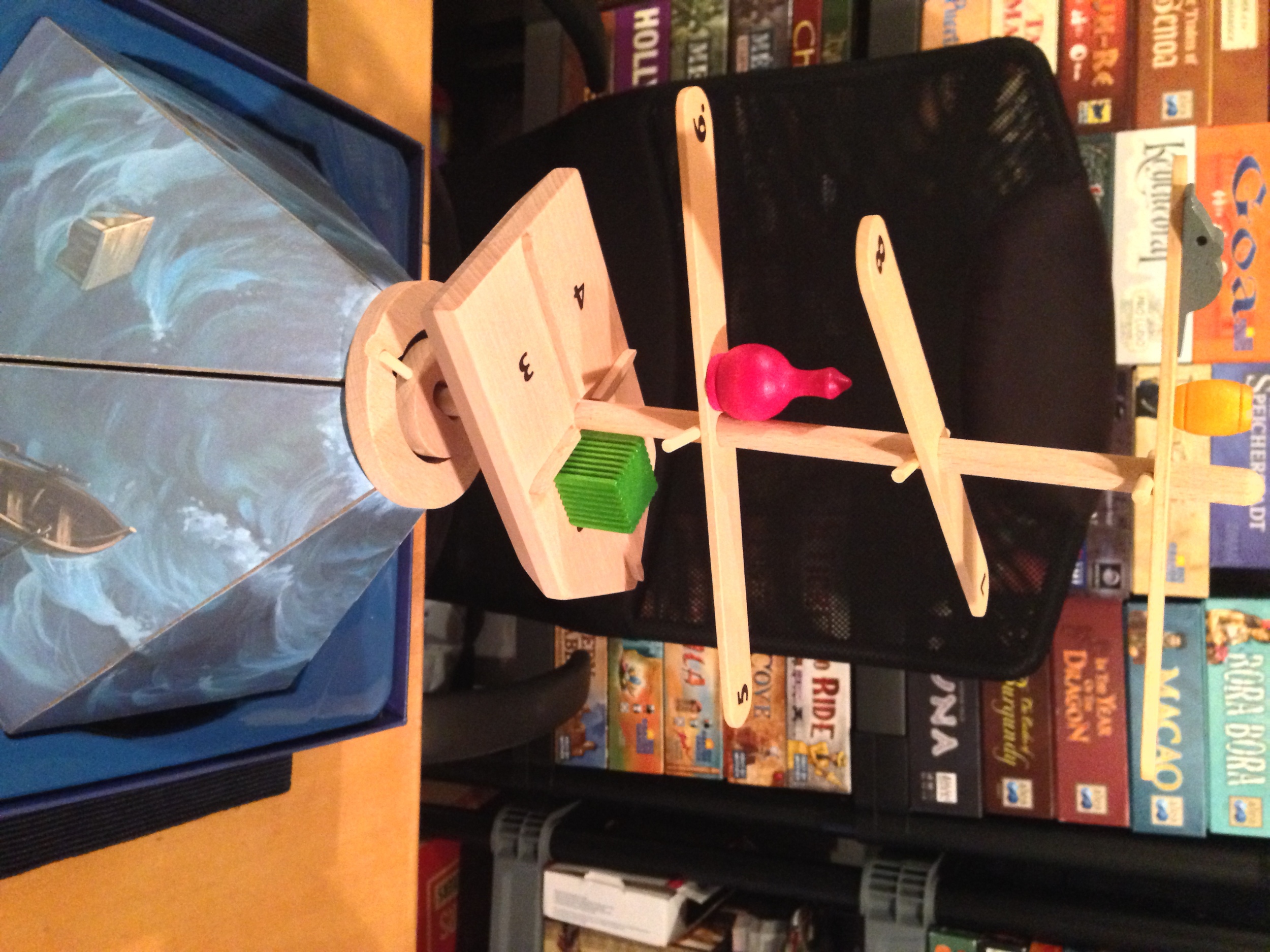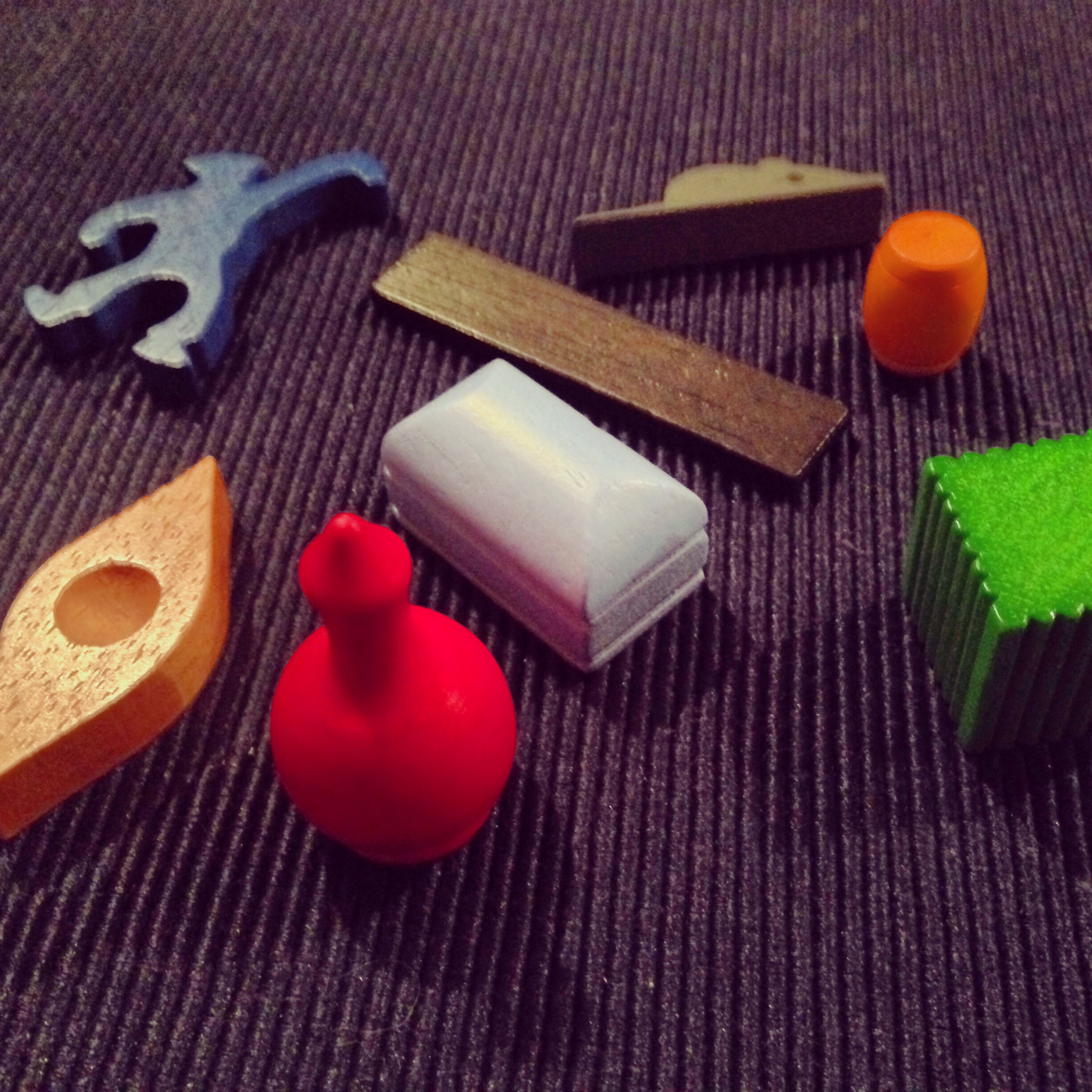Riff Raff—A Review
/ by Firestone
I wipe the sweat from my brow, and extend my hand slowly toward the swaying ship. "It's just a small, light barrel," I tell myself." I've got this." In the blink of an eye it's raining crates, sailors, and rats. My wife and children grin impishly...
by Firestone
I wipe the sweat from my brow, and extend my hand slowly toward the swaying ship. "It's just a small, light barrel," I tell myself." I've got this." In the blink of an eye it's raining crates, sailors, and rats. My wife and children grin impishly...
I love dexterity games. They're a great diversion from the heavier games I generally play. And, of c0urse, they're usually a great choice for families and nongamers. So I always love trying a new dexterity game—and I LOVE it when one turns out to be great fun, like Riff Raff...
The Overview
Riff Raff is from Zoch Verlag, and is currently only available as an import, so expect to pay somewhere in the neighborhood of $50—and that's the online price. It plays between 2 and 4 players, ages 8 and up. It plays in about 20 minutes—maybe less.
The game will end in one of two ways: Either one person will place all of his or her Cargo pieces onto the Ship, or the game will go the full 10 rounds, in which case the person with the fewest Cargo pieces left wins.
The Components
40 Cards, numbered 1 through 10, in four player colors.
32 wooden Cargo pieces—4 identical sets of 8 different pieces
1 wooden Ship, consisting of 10 different parts.
First you'll need to assemble the Ship. This is no small task, as the Ship is a marvel of engineering. You're building a Ship, with a deck, and three yardarms, and the whole thing is connected to a cool sort of universal joint that allows the Ship to sway and pitch, as though it's really on an ocean. It's seriously cool.
Each player takes one set of Cards, and a set of 8 Cargo pieces. (If you're only playing with two players, each person gets two complete sets of pieces.)
The Gameplay
Randomly choose someone to be Captain. (The rules say the oldest player, but this is where we employ the Firestone Common Sense Rule that arbitrary first-player determinations such as "oldest" or "hairiest" or "the last person to have their ship boarded by pirates" are dumb.)
At the beginning of the round each player secretly chooses on card from his or her hand and places it facedown on the table. Once everyone has picked a card, everyone reveals their chosen card. The player who played the highest card immediately becomes the new Captain, and if there's a tie for highest card, the Captain of the last round determines who is the new Captain. The Captain takes his turn, followed by the person who played the next highest card, and so on. Again, ties are broken by the current Captain.
The sections of the Ship have numbers on them. Starting on the top yardarms with 10 and 9, the next one is 8 and 7, and the lowest yardarm is 6 and 5. Then the Ship's deck has sections 4 through 1.
The number on the card you've chosen is where you now have to place a piece. You have free choice of any of your available pieces. They range from (relatively) heavy to light. You can use one or two hands to load, and the piece can hang off of a section, but can't protrude into any other section. You can move already present pieces with the piece you're placing, but not with your hand.
 If you're placing a piece onto a yardarm, and it already has a piece on it from a previous turn, you can choose to place two pieces instead of one. You have to announce this at the beginning of the turn, and you can't later change your mind.
If you're placing a piece onto a yardarm, and it already has a piece on it from a previous turn, you can choose to place two pieces instead of one. You have to announce this at the beginning of the turn, and you can't later change your mind.
Because of that clever and insidious universal joint I mentioned, the ship is going to move and sway based on which pieces have been placed on which section. If any pieces fall as you're placing your own pieces, then one of two things can happen:
If you catch any of those falling pieces, then they go out of the game.
If any of the pieces hit the table, they go in front of you and become pieces you now have to get rid of—even if they were originally other people's pieces.
We have a house rule where you can't catch the piece you just placed. This keeps people from just poorly placing a piece, knowing it will drop, and then catching it to get it out of the game.
After every player has had a turn, everyone picks a new card, and you repeat the round. The winner is either the first person to get rid of all of his or her pieces, or the person with the fewest pieces left after 10 rounds.
The Verdict
 First, the game has huge drive-by appeal. Every time we play this we get a crowd of people watching. The Ship is unique and eye-catching and people just love to watch you play this game.
First, the game has huge drive-by appeal. Every time we play this we get a crowd of people watching. The Ship is unique and eye-catching and people just love to watch you play this game.
The cards add some strategic depth to this, as you're trying to figure out where to place pieces, when to place pieces, and which piece to place. You might play a 6, and still end up going last—and the Ship might look VERY different by the time your turn rolls around...
It's fun for families and nongamers. You will marvel as your weaselly children plunk down a piece with complete aplomb—and defy logic and the laws of physics as their piece sticks. Meanwhile, you blink too hard an every piece comes raining down. It's fun and frustrating.
My only concerns with the game are that something will break. The Ship is exceedingly clever, but also feels one tweak away from breaking whenever I put it together or take it apart. I also make sure I'm playing on a surface with a tablecloth, or some kind of covering. If one of those pieces breaks, I can glue it, but...I just don't want anything to break. So I go into Anal Gamer Firestone Freakout mode—the same one I use when someone eats dinner right before playing one of my games. "Hey, would you mind washing your hands before we start...?"
The Final Verdict
One of my friends brought this back from Origins, and we gave it a go one game night. The three other players in the game (myself included) immediately went out and bought the last three copies from TimeWellSpent.org. I can't give this game a better endorsement than that. It might take some searching (and honestly...it's pretty darn expensive), but if you like dexterity games, this is well-worth the search...
Thanks for reading! And make sure you check out our YouTube channel for our video reviews! Thanks!















